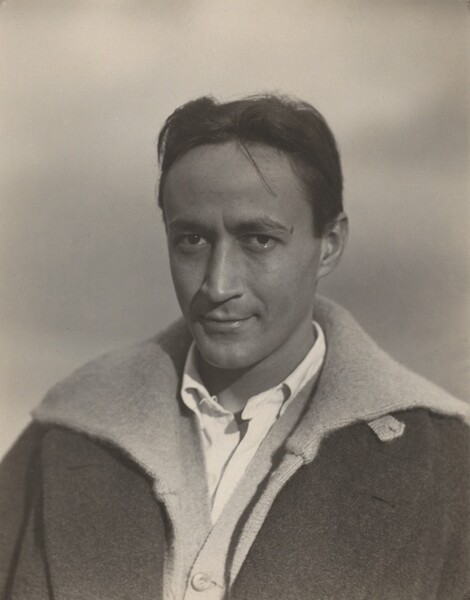Wind is in the cane. Come along.
Cane leaves swaying, rusty with talk,
Scratching chorused above the guinea’s squawk,
Wind is in the cane. Come along.
Jean Toomer’s Cane is his poet song of the American South. Written in 1923, it’s like a Harlem Renaissance painting speckled with colorful Black characters decorated in the glow of a Georgia sunset.
Told through a series of vignettes, Cane lurches the reader through the window of time and uses its descriptive portraits to summon the sweet breeze of the cane fields. It squeezes through tropes and stereotypes to authentically portray Black life, lust, joy and sorrow, in all of its beauty and cadence.
I first found out about Cane from Langston Hughes, who praised it as a “beautiful book of prose and verse” in his autobiography The Big Sea. Alice Walker also sang its praises throughout her transformative book, In Search of Our Mothers Gardens. With Alice Walker and Langston Hughes, my literary mother and father, both celebrating the power of Cane, I knew I had to read it. (I picked up a copy when it found me meandering the rows of a bookstore in Seattle.)
Although Cane was published to critical acclaim as one of the fine examples of the “Negro Renaissance” (as Hughes liked to call it), its success as such, combined with Toomer’s controversial attitudes on race and refusal to identify as a Negro writer, complicated the legacies of both the book and the author.
Toomer had fair skin, was of mixed-race background and spent his childhood growing up as a Black aristocrat in Washington D.C. According to public documents, he went back and forth identifying as white or Black and would often be mistaken for Native American. As he began to grow into his artistry in Harlem during the Negro Renaissance, he championed the notion of being referred to simply as “American” instead of Black. He believed America was heading towards being a mixed-race society and that by rejecting the pigeonholed notion of race, the problems of Black vs white would soon be solved.
When you compare Jean Toomer’s wishy-washy sometimes Black/sometimes white-passing attitude, with his contemporary Zora Neale Hurston’s unapologetic Blackness, it makes sense why Toomer’s book isn’t in the mainstream of Black literature. However, when you separate the art from the artist, Jean Toomer’s Cane represents Blackness just as dynamically as Zora Neale Hurston is most famous for.
In fact, you wouldn’t think that Toomer wasn’t proud to be Black when you read Cane. Its portrayal of Black Southern pride is what was so groundbreaking about the novel when it first came out in 1923, and even today, almost a hundred years later in 2020. The trials and tribulations his characters endured weren’t written in a way to instill pity, they were accurate portrayals that revealed their humanity. Many critics compliment Cane as laying the foundation for how Black folks were represented in literature.
I can see why. Toomer masterfully utilized literary devices, such as symbolism, imagery, diction, and unconventional structure, and overall, Cane is an educational lesson in experimental writing.
Because the point of view changes with each passing story, he uses language as a way to distinguish his characters and narrators. The syntax and diction will vary as well, giving each story its own expression. Toomer encapsulates the Black vernacular of the times, in using dialogue like, “Youalls” “ahelpin’” or “I enjoys t hear y talk.” (Kabnis, 137).
Even the fine details of the scenes’ locations, the “nigger alleys” (Theater, 65) or the cane fields themselves, help transfer the gravity of the full picture. It’s a book you’ll want to read through the notes to get the proper context and engaging background details.
The pace of the book sways from prose, poetry and play-like dialogue, letting the stories flow naturally, like peering into your neighbor’s lives as you walk by on a neighborhood stroll.
His use of imagery is one of his strongest tools. Lines like “the full moon sank upward into the deep purple of the cloud bank” (Blood Burning Moon, 41) or “like her face, the whole countryside seemed to flow into her eyes” (Fern, 21) draw such a clear yet avant-garde vision.
The overarching symbolism of the cane permeates throughout the feeling of the entire book. “Cradled in dream-flute cane” (Calling Jesus, 73), “time and space have no meaning in a cane field” (Carma, 14), “settled with a purple haze about the cane” (Fern, 23)…
The parts of Cane that really spoke to me were the poems Georgia Dusk, Storm Ending and Evening Song, which rolled into the heart like a song, and the prose portraits of Black women, like Carma and Karintha.
Despite Toomer’s complex racial philosophies, reading Cane was an insightful journey into my ancestor’s way of life. I only visited the South once as a child, so for me as a first-generation Californian, his stories drew a feeling I have yet to experience fully in my adult life. They invoked a sort of nostalgic, native longing to return to my American bloodland and hear the wind in the cane-fields.
After Cane was published, Toomer’s quest for wholeness led him to seek enlightenment in the Russian mysticism of spiritual teacher George Ivanovich Gurdjieff. Cane ended up being Toomer’s last literary contribution and in reflecting on Toomer’s decision to stop writing altogether, Hughes said, “Harlem is sorry he stopped writing. He was a fine American writer.”
I agree.
All in all, Cane is a modernist masterpiece. As author Zinzi Clemmons wrote in the foreword to the 2019 re-release of Cane, the novel “gestures towards the heavens, allow[ing] us to look beyond what lies before us here on Earth.” Toomer was a brilliant writer and his experimental twist of storytelling is inspiring to those willing to learn from it.
– Tyler

